With spring here, you may be wondering how to manage runoff from snow or rain hitting saturated soils. Unexpected or mismanaged water is not just inconvenient; in some areas it is truly dangerous. In my native Los Angeles, too much water can lead to slope destabilization, slides and ocean pollution as runoff overwhelms storm systems. These are ugly problems, but at least one of the potential solutions is incredibly beautiful!
Dry riverbeds are a visually striking way to engage and manage the water on a property, whether you expect flash floods or simply hope to ensure that you control and direct the water that enters your site as productively as possible.
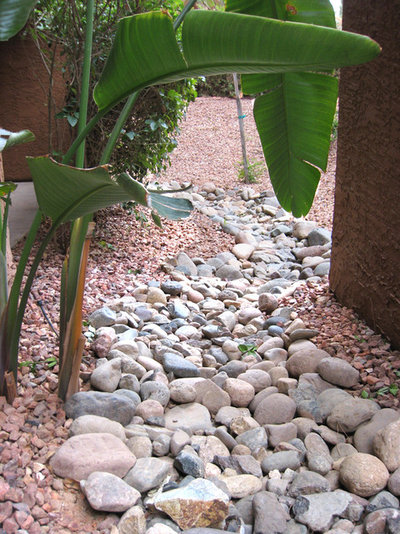
Golden Associates, Landscape Architects
While dry riverbeds are workhorse features, don't underestimate their potential to make a positive visual impact. In arid landscapes, the mix of river rock and other permeable materials like this contrasting, colorful gravel can be dramatic and visually engaging.
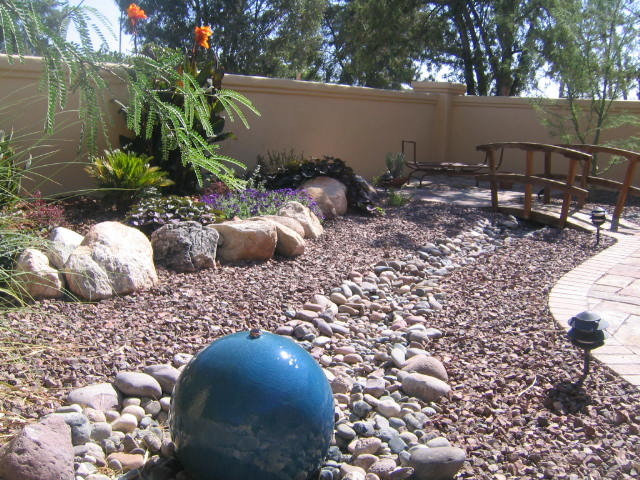
Celine Fisk
While it may or may not be the case in this garden, it is possible to route water to feed water features like this small fountain.
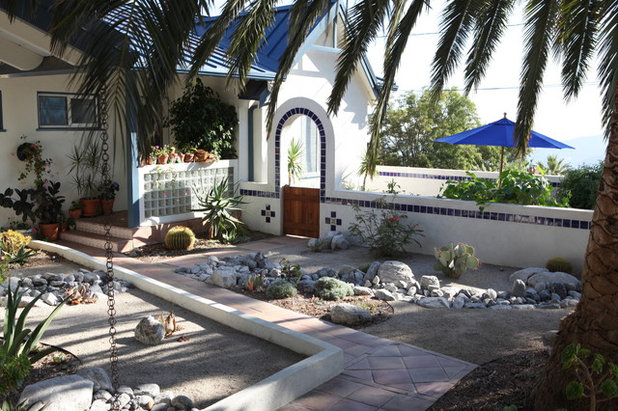
Cassy Aoyagi, FormLA Landscaping
While the sense of energy and vitality created by the dry riverbed above is enhanced by the contrast in color between the river rock and surrounding stone, riverbeds surrounded by materials of more analogous materials, like the decomposed granite here, still convey richness and vitality.
Note: A rain chain visible on the left of this photo allows water to permeate into the ground and feed back into the groundwater table. An infiltration pit could help move excess water off the property.
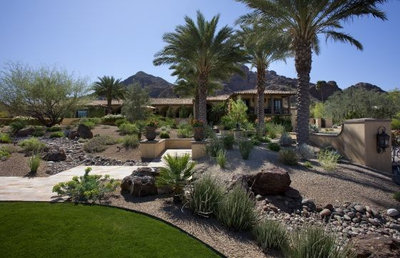
While infiltration is preferred, dry riverbeds can also help excess water percolate onsite prior to efficiently leaving the property after it has saturated the soil.
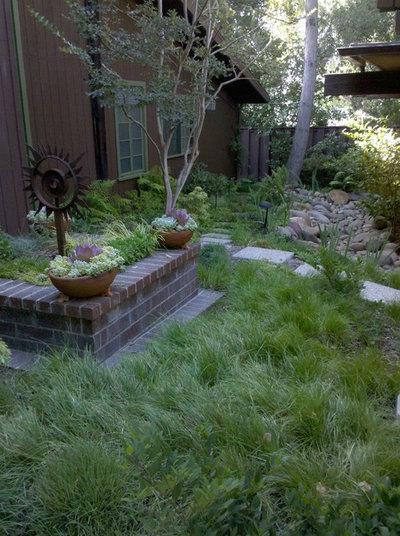
Cassy Aoyagi, FormLA Landscaping
While commonly associated with more xeriscaped looks, as desert gardens live or die on their ability to effectively manage low and unexpected water, dry riverbeds can complement a wide variety of aesthetics.
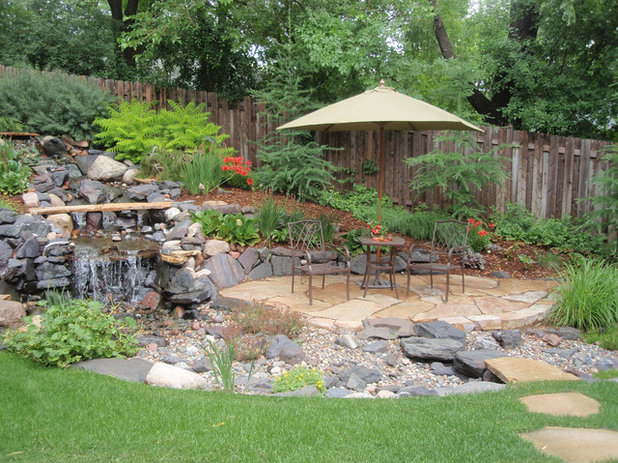
Field Outdoor Spaces
A dry riverbed can help stabilize a slope by providing a venue for water to escape, a major factor in preventing slides. This particular river may also feed an infiltration pit.
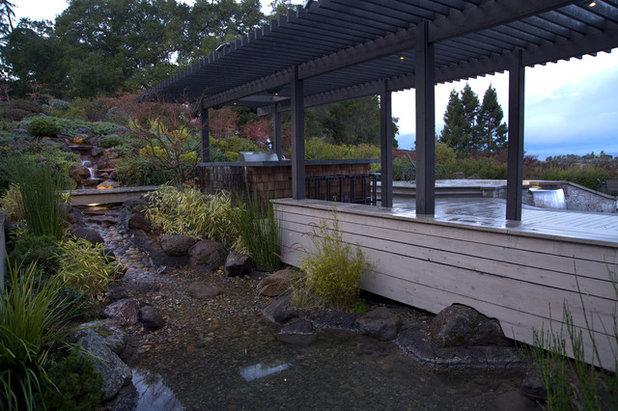
Kikuchi + Kankel Design Group
Dry riverbeds can help route water away from the foundation of a structure. This is important, as so many structures are built without a firm understanding of the natural water flow on a property.
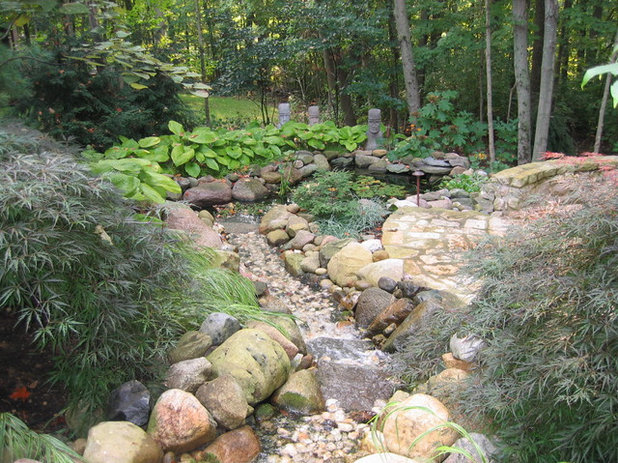
River Valley Orchids
This riverbed appears to feed a biological pond, a beautiful and effective way to store water onsite while allowing some water to percolate and infiltrate the groundwater table.
Dry riverbeds are just one strategy for directing and managing excess water. Watch for upcoming more ideabooks on related topics and check out Erin Lang Norris' article on rain chains.
More:Easy-Care Landscaping With Rocks and Boulders
Great Design Plant: Slipper Plant
Steeply Beautiful Slope Retention





